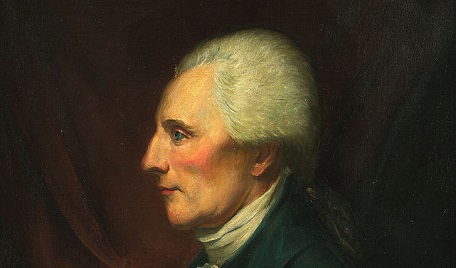On September 28, 1787, the congress under our first constitution, the Articles of Confederation, agreed to submit a new Constitution to the states, an act that would render that legislative body obsolete.
On that Friday in New York City, representatives from 12 of 13 states were assembled to vote on the proposed actions made in Philadelphia during the summer and approved on September 17, 1787. The new Constitution was submitted as a report for consideration. The 12 states at the Confederation Congress voted unanimously to submit the new Constitution to the states for ratification. It required that each state hold a convention “by the people” to agree “in conformity to the resolves to the Convention.”
Talk about a meeting to discuss an overhaul of the limited Articles of Confederation had started several years earlier, and the Philadelphia Constitutional Convention had been endorsed by the Confederation Congress on February 21, 1787. The original resolution approved by the Confederation Congress was for calling a convention in May 1787 for the “sole and express purpose” of revising the Articles of Confederation. This report would contain “alterations and provisions” that “render the federal Constitution adequate to the exigencies of government and the preservation of the Union.”
But when the new Constitution arrived at the Confederation Congress, the body wasn’t initially unified in its decision to submit it to the states for approval. The Philadelphia Convention’s President, George Washington, asked the Confederation Congress to approve a process to start a new form of government and not alter the Articles of Confederation.
“The friends of our country have long seen and desired, that the power of making war, peace and treaties, that of levying money and regulating commerce, and the correspondent executive and judicial authorities should be fully and effectually vested in the general government of the Union: but the impropriety of delegating such extensive trust to one body of men is evident—Hence results the necessity of a different organization,” Washington wrote.
Washington also noted that the convention wanted the Confederation Congress to submit the Constitution to all of the 13 states, with nine needed to approve the document, and that the Confederation Congress should supervise the transition to a new elected form of government.
According to notes compiled by a New York representative, Melancton Smith, and other correspondence, there was a sometimes-heated debate for about a week before the new Constitution was submitted for ratification. Virginia’s Richard Henry Lee insisted that the Confederation Congress add its own version of the Bill of Rights to the document before it was passed on to the states. That motion failed to get approved.
Nathan Dane of Massachusetts approved sending the Constitution on to the states with reservations and as a series of amendments to the Articles of Confederation. “If it [the Constitution] is to be approved, it will be moved to take it up by paragraphs, objections stated, [and] amendments moved,” said Dane, as recorded in Smith’s notes.
On September 27, Smith said James Madison, as a Confederation Congress delegate from Virginia, and Richard Henry Lee debated the new Constitution’s appropriateness. Lee strongly objected to the idea that the Confederation Congress shouldn’t alter the new Constitution.
“To insist that it should go as it is without amendments is like presenting a hungry man 50 dishes and insisting he should eat all or none,” Lee said. Madison countered with an argument the Articles of Confederation were proposed in the same manner and the Constitution was similar in spirit. “A circumstance distinguishes this report from others. The Convention was not appointed by Congress, but by the people from whom Congress derive their power,” Madison said.
The compromise reached on September 28 allowed the Constitution to be submitted to the states without a note of approval or rejection by the Continental Congress, in the manner suggested by George Washington.
William Grayson, anti-Federalist from Virginia, also voiced reservations but agreed with the compromise. “If we have no right to amend, then we ought to give a silent passage, for if we cannot alter, why should we deliberate,” Grayson said. He also noted the need for a new federal system to deal with the nation’s financial problems and that a near-term solution seemed unlikely.
“This Constitution will not remove our difficulties–the great defects [in] a disinclination to pay money. That removed, our great difficulty would be over. No necessity to urge a hasty decision. In 2 or 3 years we should get a good government,” Grayson concluded.
The Constitution was then submitted to the states for ratification. In a transmittal letter, the Confederation Congress noted that submission was “in obedience to a unanimous resolution of the United States in Congress assembled.” The official Journals of the Congress didn’t note the details of the debate held in the days prior.
Scott Bomboy is the editor in chief of the National Constitution Center.








